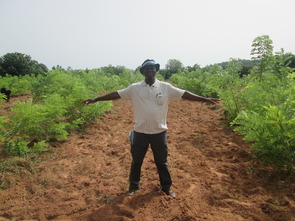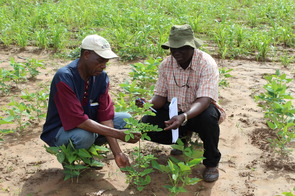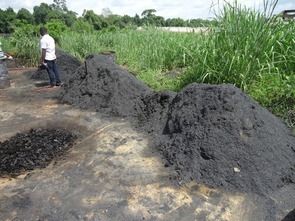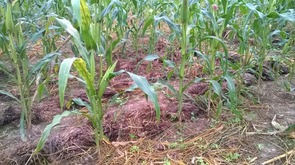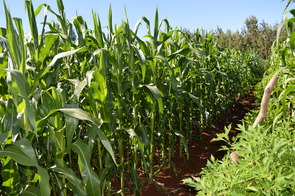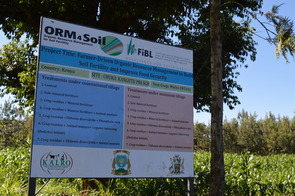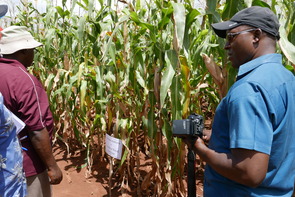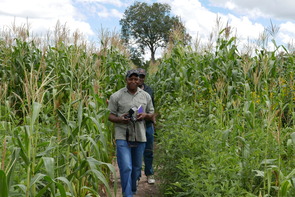All Field Trials
Mali
Assessing the effects of organic and mineral fertilizers on soil characteristics and yields of cotton and maize in the alley cropping system: case study with Gliricidia sepium.
The participatory rural appraisal (PRA) conducted in 2015 in the villages of Mafèya and Zoumana-Diassa showed a preference for agroforestry techniques, with alley cropping systems being chosen by more than 70% of farmers for testing and up-scaling. Field experiments were implemented in 2016 at the research stations of Farako and Katibougou as well as on-farm trials on 15 farms in each site, to evaluate the effects of Gliricidia sepium based alley cropping system on sustainable management of soil fertility and productivity.
Ghana
Use of empty fruit bunch, mulching and biochar alone and in combination with mineral fertilizers on maize and cowpea (Kade); and the rate and mode of application of manure in combination with mineral fertilizer rates (Sege)
During the participatory rural appraisal (PRA), carried out in 2015 in the areas of Kade and Sege, it became clear that among other barriers, the bulkiness of compost and the high manual labour involved were major obstacles to the use of organic inputs.
The implemented field trials are based on farmers' concerns and are being developed in collaboration with them, and seek to understand the effect of compost made of residues from cocoa and oil palms (empty fruit bunch) in combination with biochar (from rice husks) and low rates of mineral fertilizers. The team has reported to have reduced the bulkiness of the used material in a significant way.
Kenya
Soil fertility management (combination of different organic and inorganic inputs) and tillage strategy effects on maize crop performance and water use efficiency in semi-humid regions in Kenya
Despite a general low adoption of agricultural innovations in the studied areas, the PRA exercise clearly showed that farmers value organic inputs and are receptive to test their effect.
The implemented trials in the two sites confirm that reducing soil tillage intensity is an option to reduce manual labor, although the short-term improvement remains challenging. The use of crop residues, manure, and biomass transfer (Tithonia) as well as the reduction in mineral fertilizer use are seen as potential ways to reduce costs and make farming more profitable. The trials are now in their third year and will starting yielding results soon.
Zambia
The effect of alley cropping with leguminous plants in combination with organic and mineral fertilizers (Chipata); and the performance of traditional and modified fundikila in combination with alley cropping and organic and mineral fertilizers (Kasama)
The selected leguminous plants (Tephrosia, sunn hemp, pigeon pea) for alley cropping are used as permanent structures in the field and pruned during the season to reduce competition. The combination with manure and mineral fertilizer at half rate were also tested. In the Kasama site, a modified fundikila system (a local traditional practice with elements of improved fallow and green manure) with velvet beans instead of the natural vegetation was also implemented.
Preliminary results seem to favour modified fundikila and the combination of organic and mineral inputs as compared to the conventional system with mineral fertilizer alone. In the Chipata site, the combination of manure with half rate of mineral fertilizer at start outperformed mineral fertilizer alone in the first season and was at par in the second.
 This website was archived on November 30, 2022 and is no longer updated.
This website was archived on November 30, 2022 and is no longer updated.


